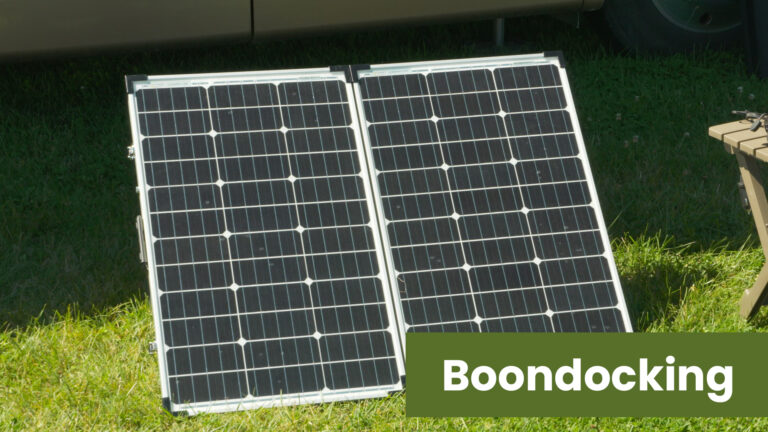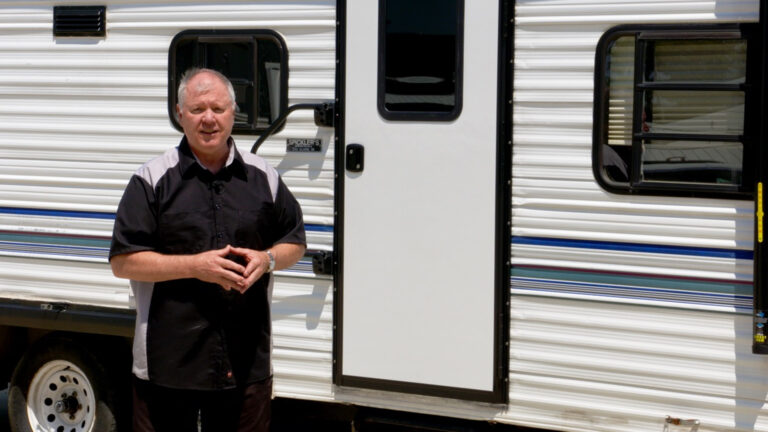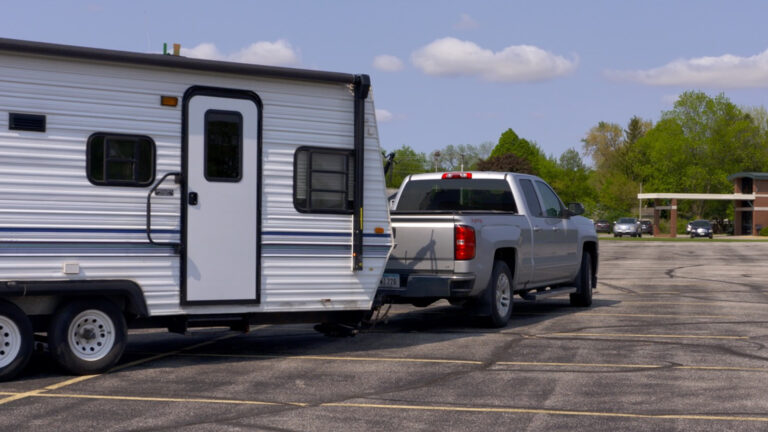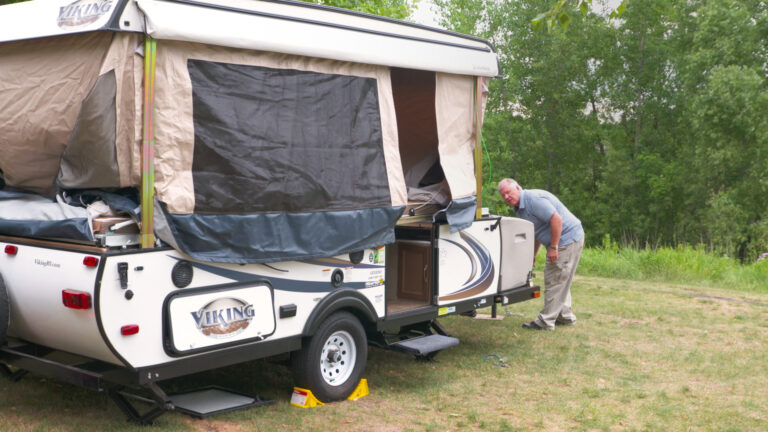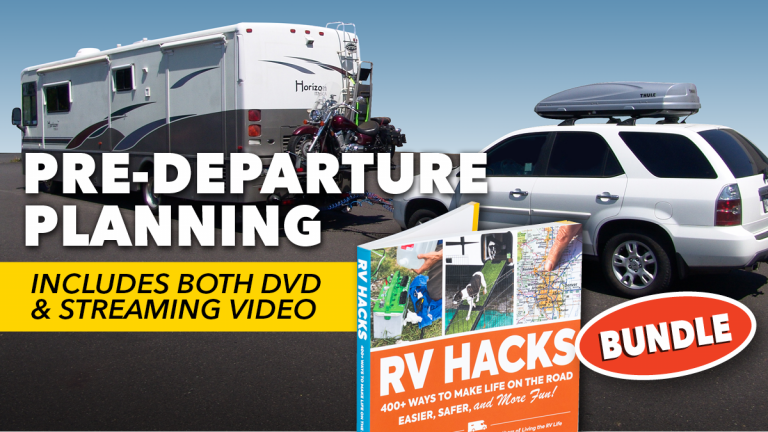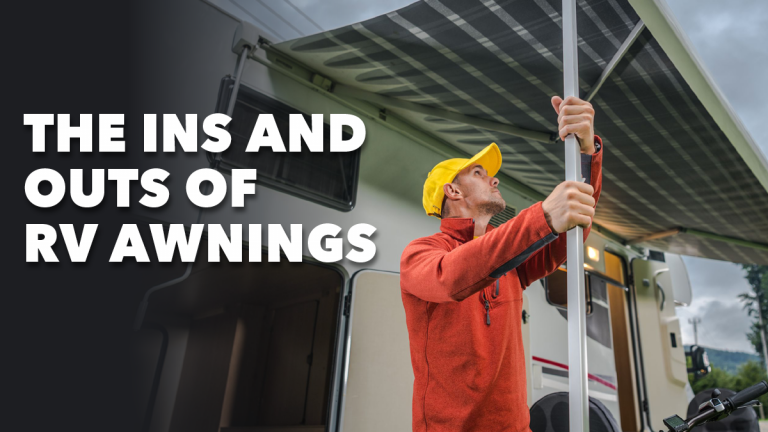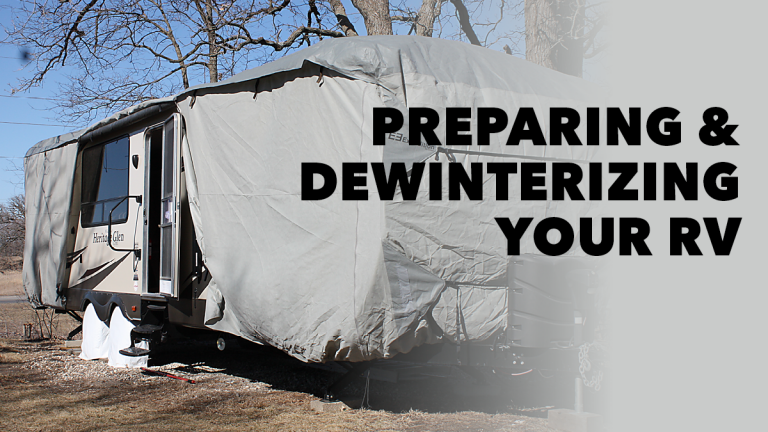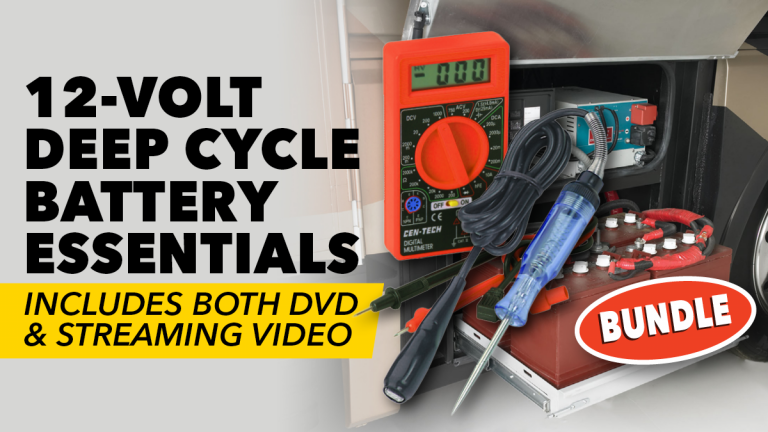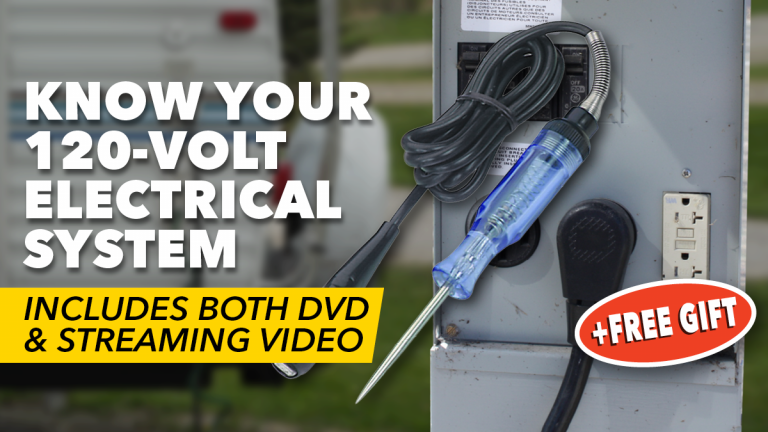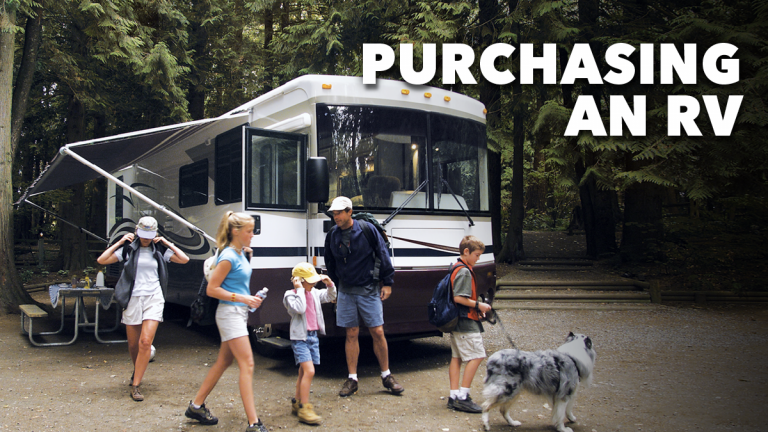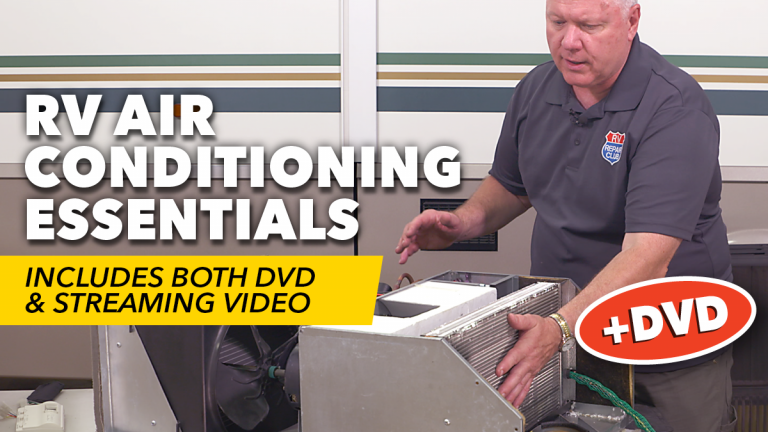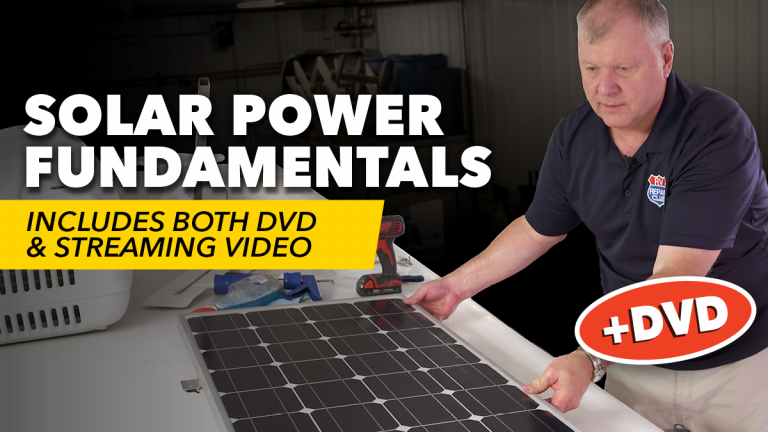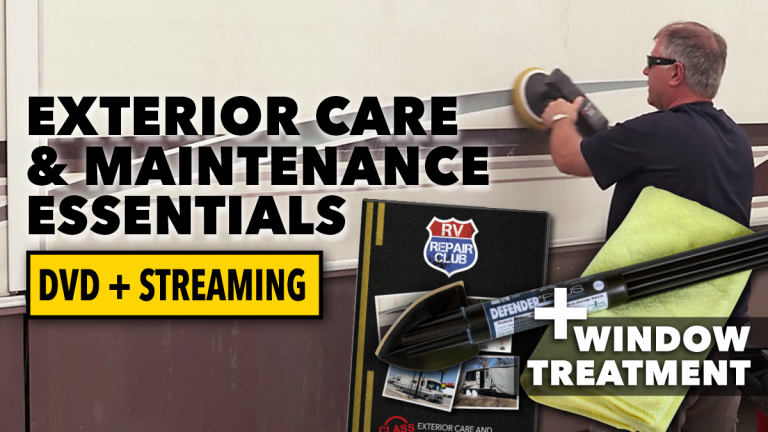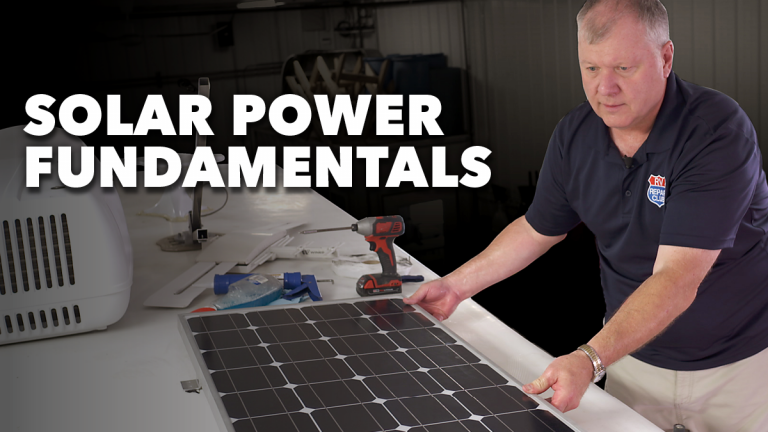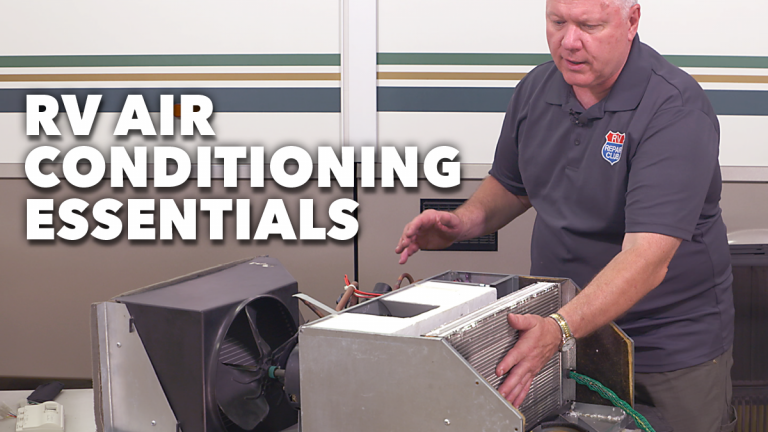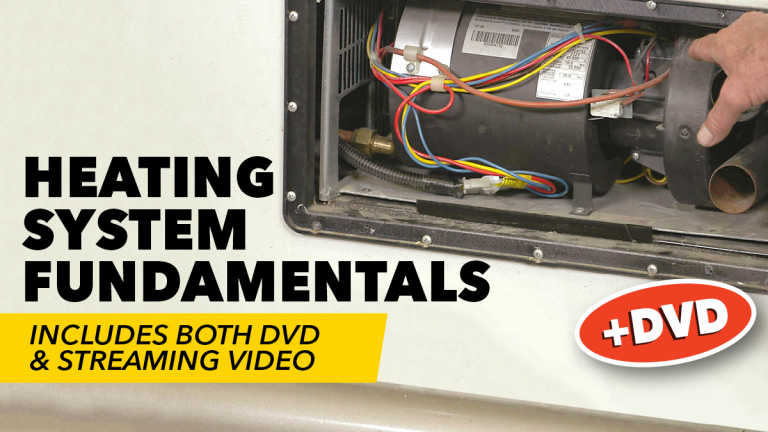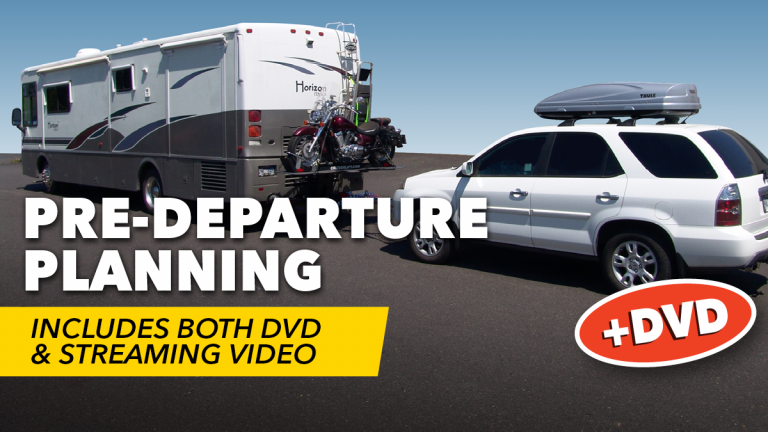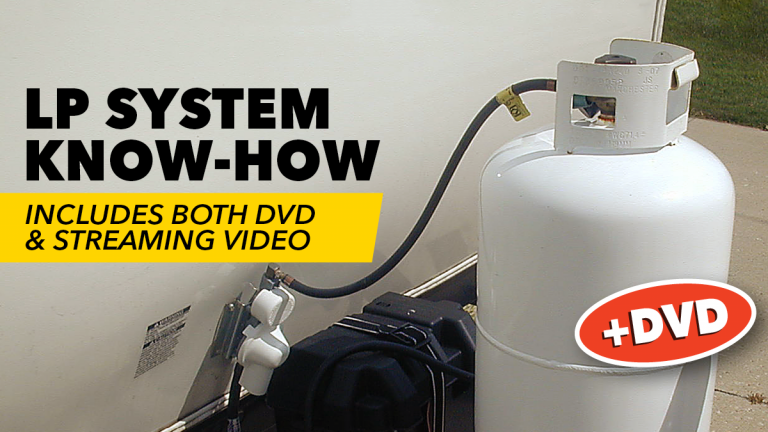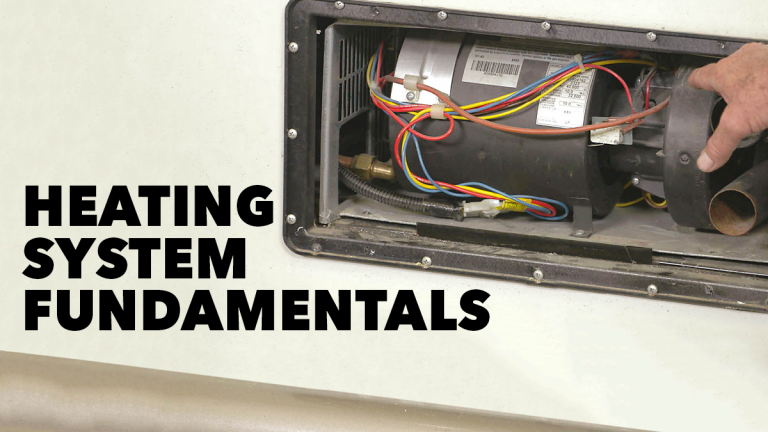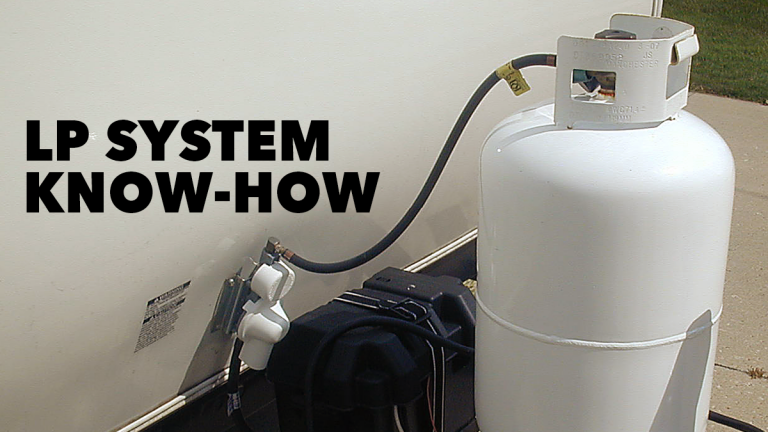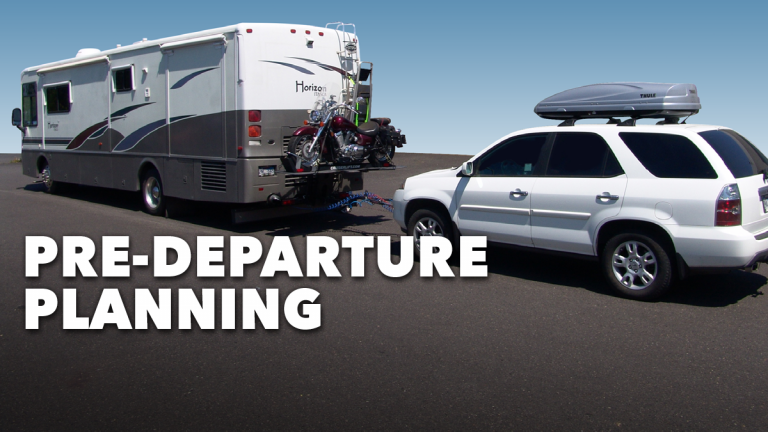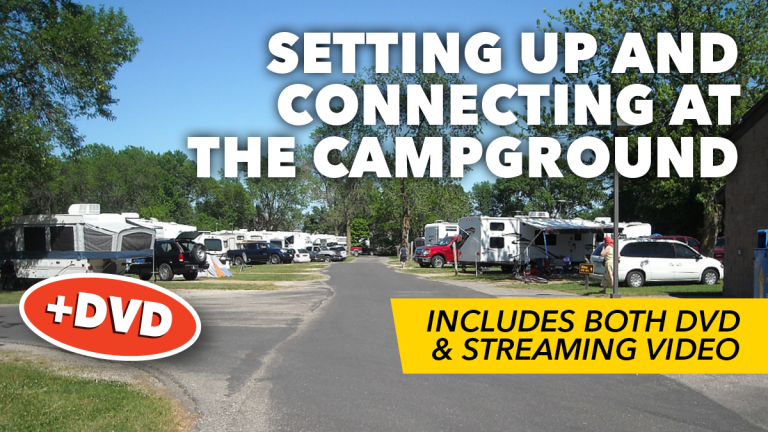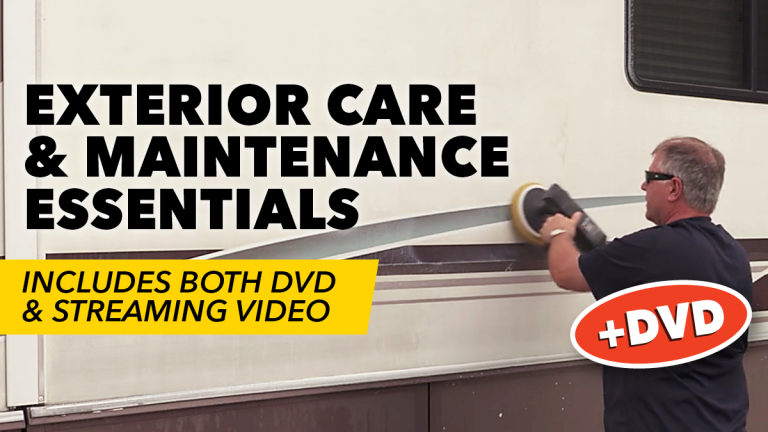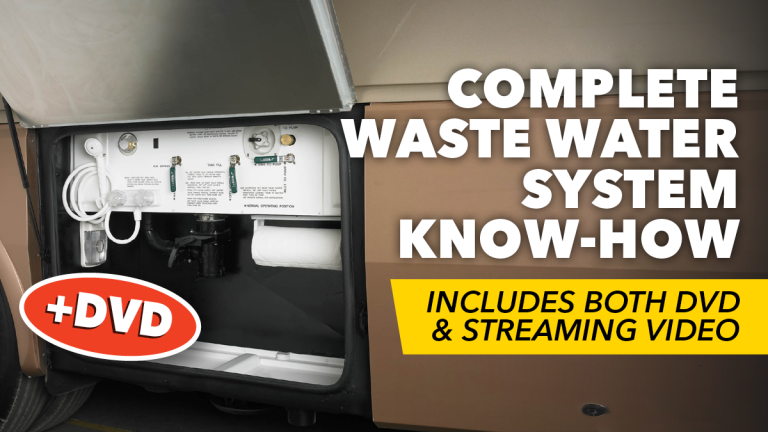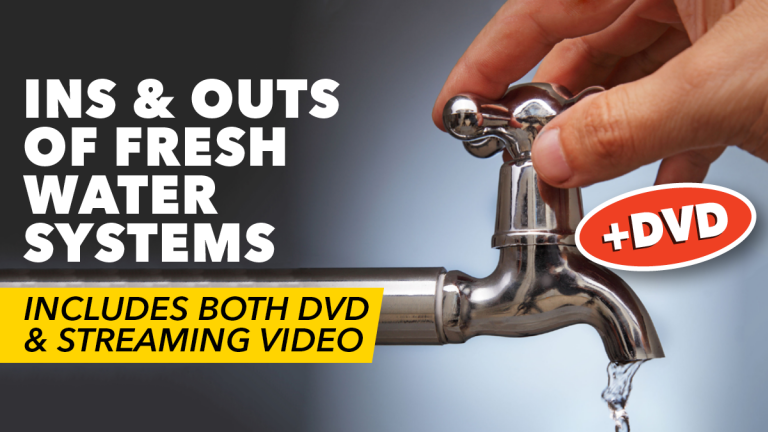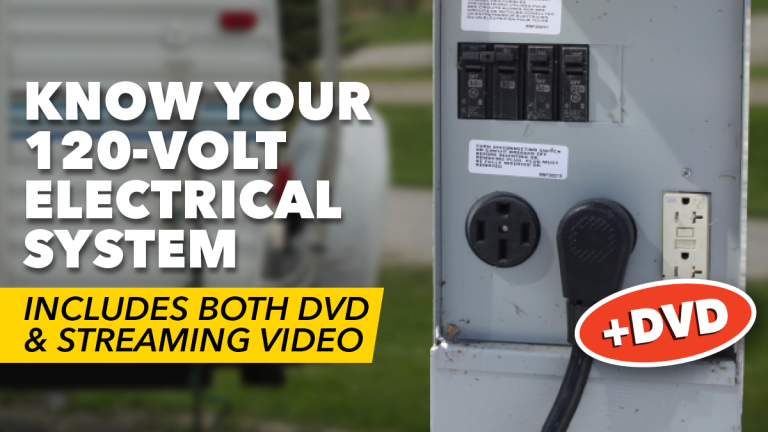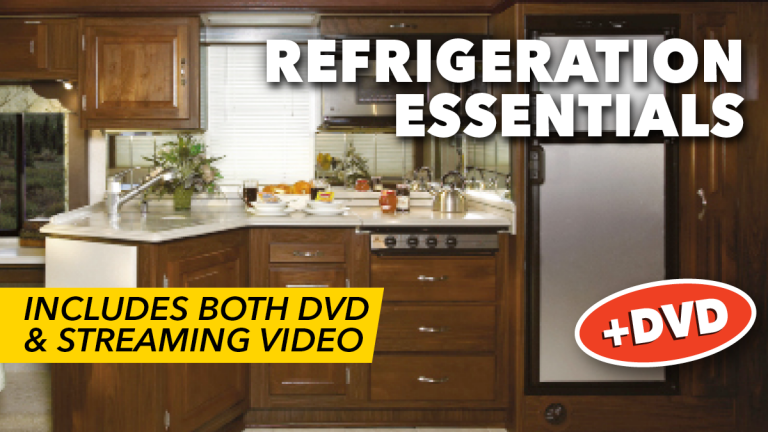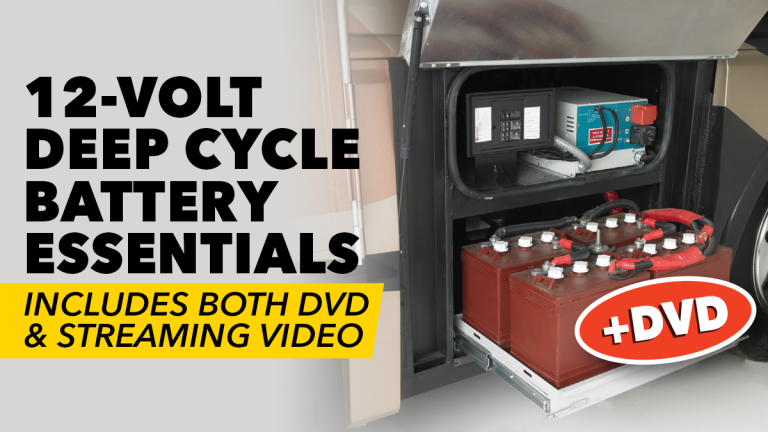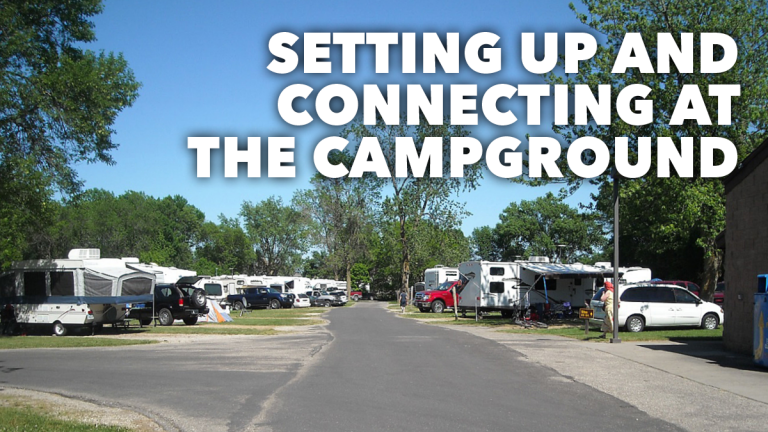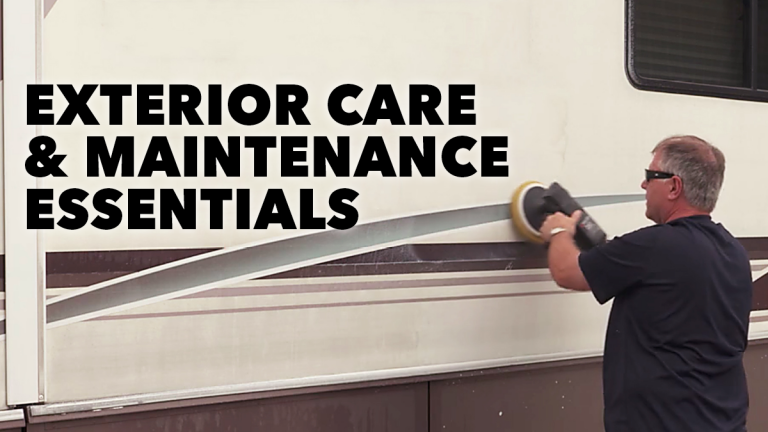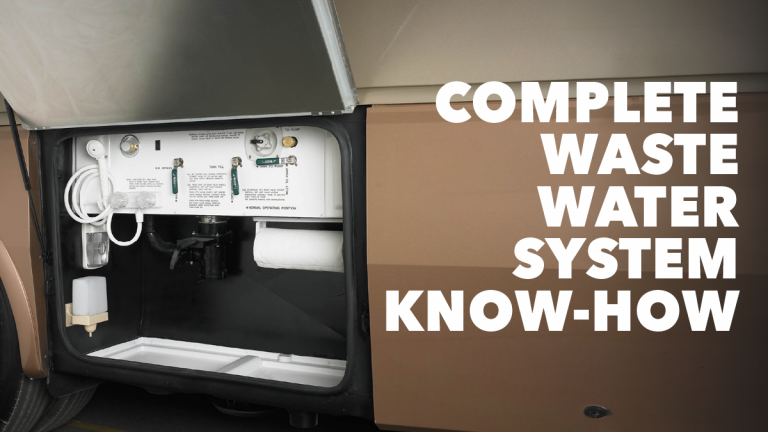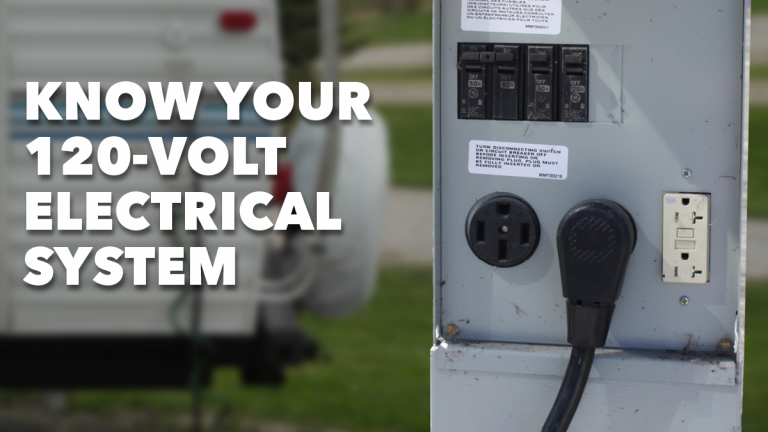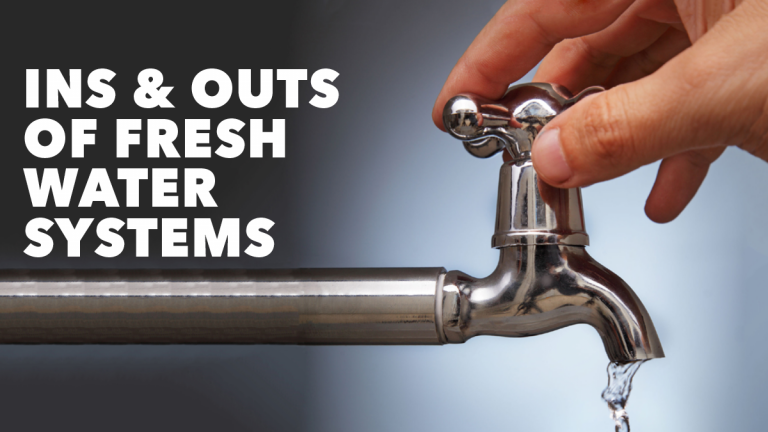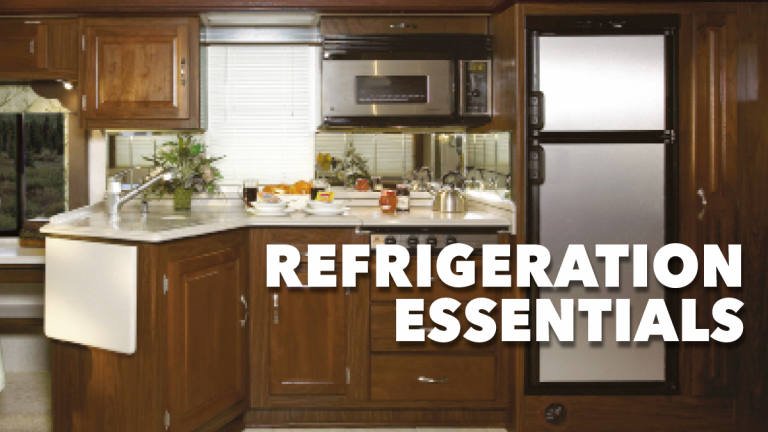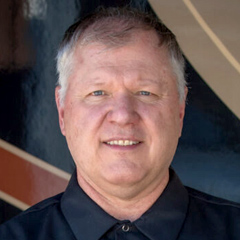
12-Volt Deep Cycle Battery Essentials
Dave Solberg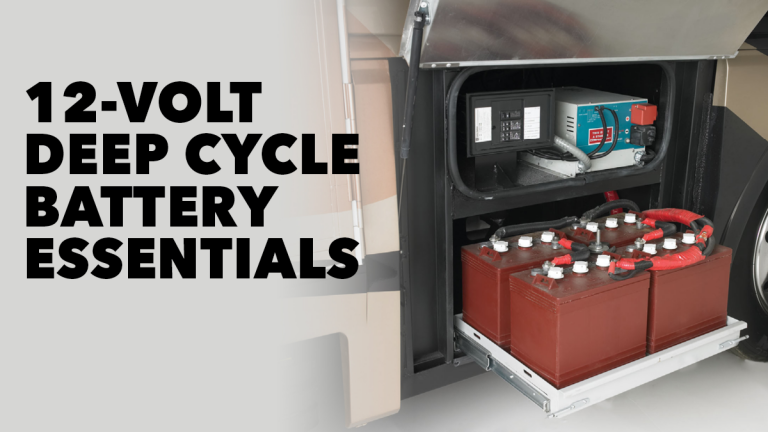

- In-depth Instruction; over 108 mins
- On-demand video access anytime
- Bonus downloadable PDF resources
- Access to class Q&A
- Available for purchase: $39.99
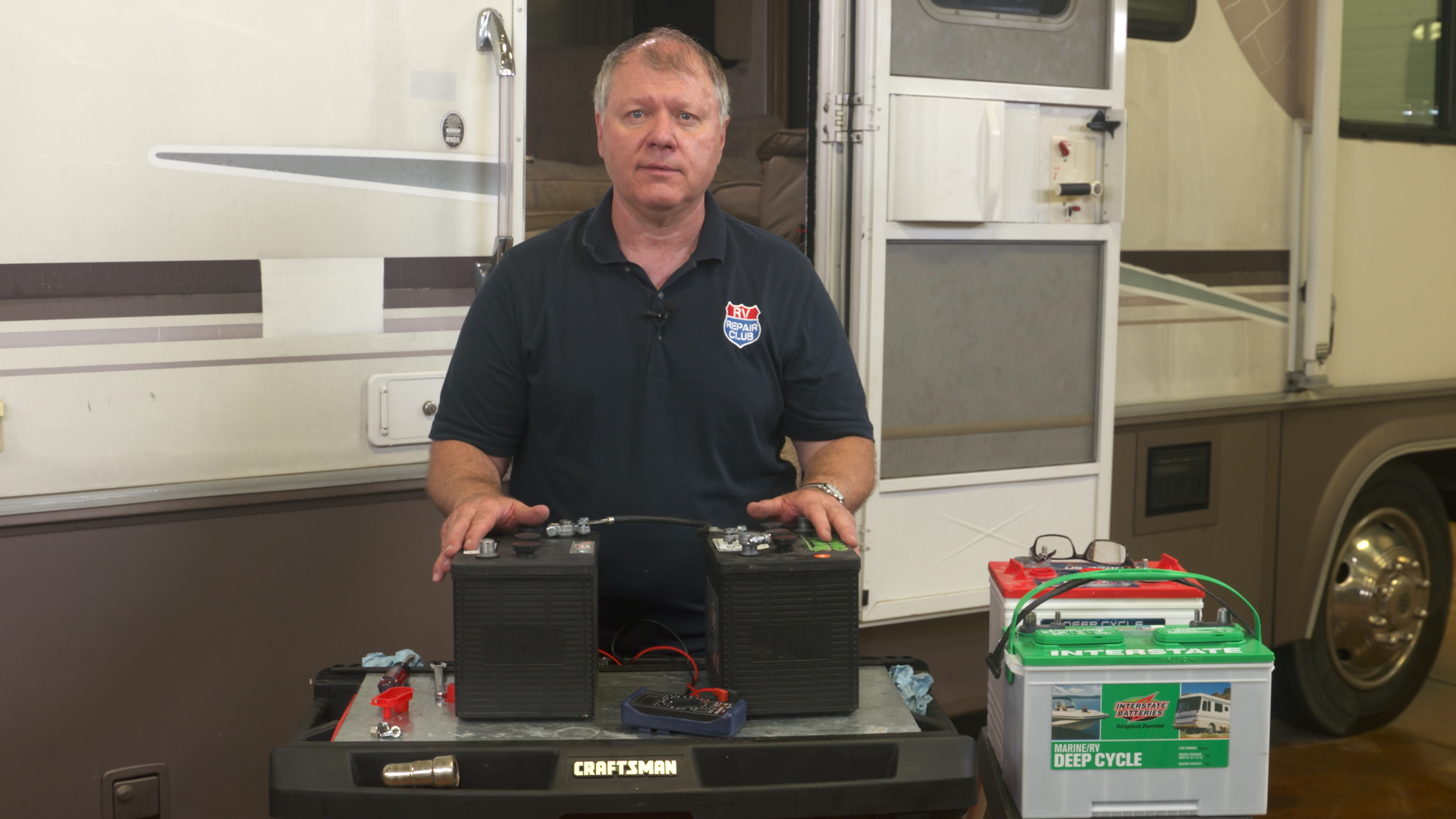
Whether you’re using a 12-volt deep cycle battery or two 6-volt batteries hooked in series, they both provide 12-volt power to run the interior lights, vent fans, water pump, and several of the appliances on LP mode. There are several types including the popular and economic lead acid, GEL, and Absorbed Glass Mat (AGM) which have become more popular as a replacement battery since they require less maintenance.
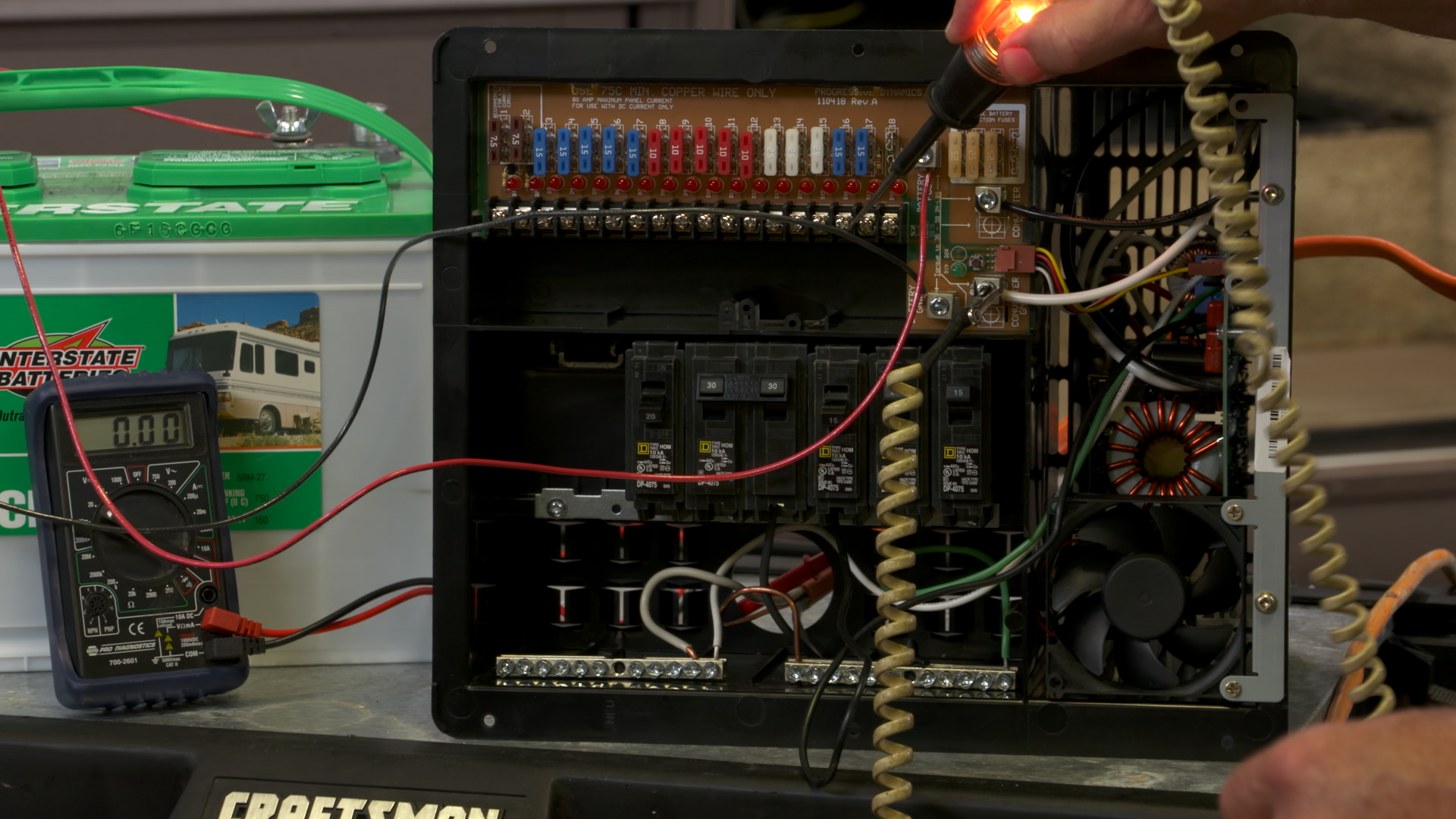
A “battery” is defined as any device that can store energy for later use. Lead plates covered with an electrolyte provide the “storage” for the chemical energy produced by an outside source such as the converter or battery charger. This energy is routed through the distribution center through automotive fuses with a positive wire going to the appliance or component, and a negative wire going to a ground source.
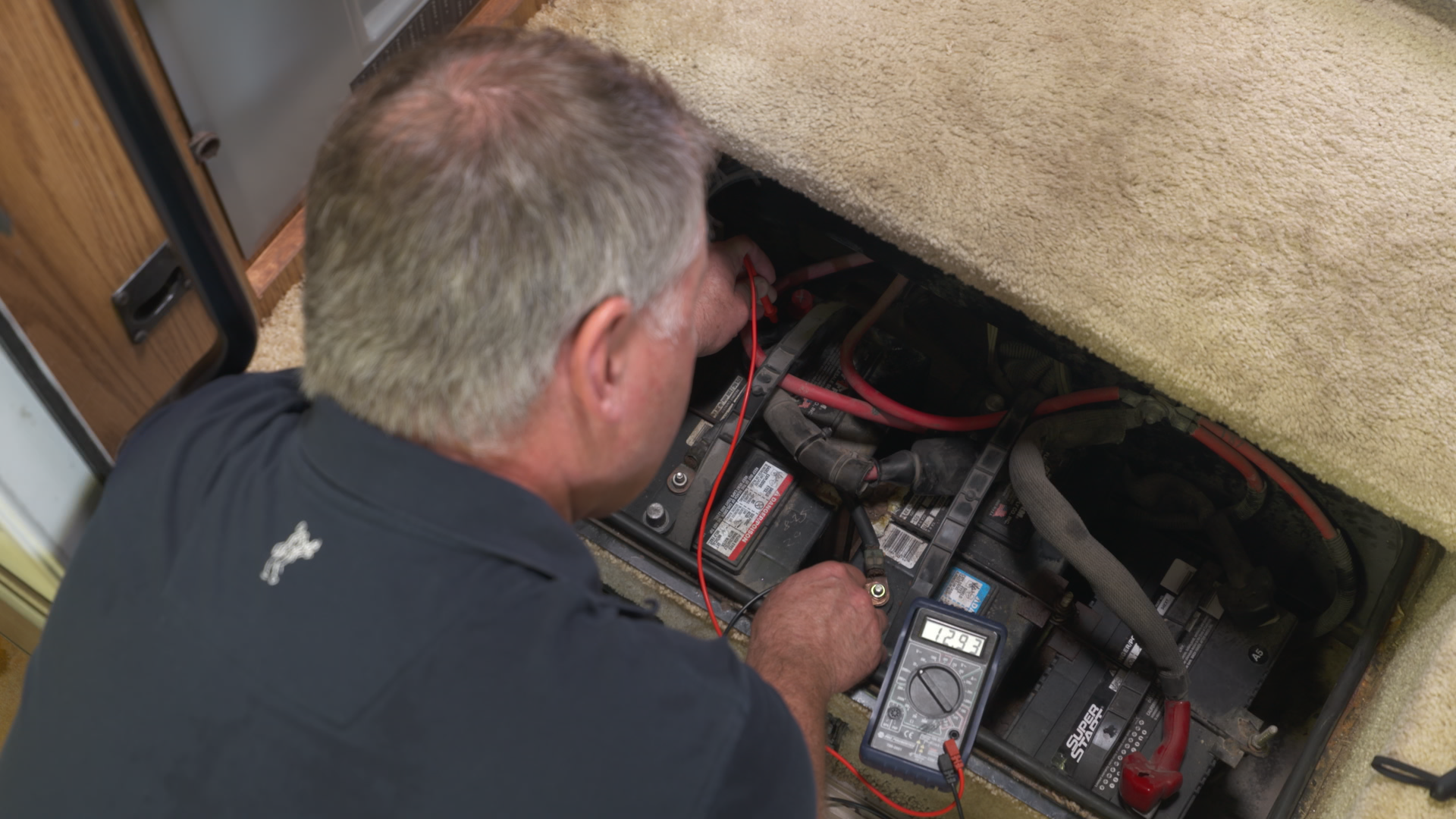
Proper battery maintenance and charging is critical for optimum power and longevity. Most RV owners lose battery capacity in the first year and by 2-3 years need new batteries. This is due to sulfation and directly related to proper storage and charging. Learn how to complete a multi-stage charge to break up sulfation and extend the power and life of your batteries. Also, using a device called the Battery Minder can extend the life of your batteries by over 200 cycles.
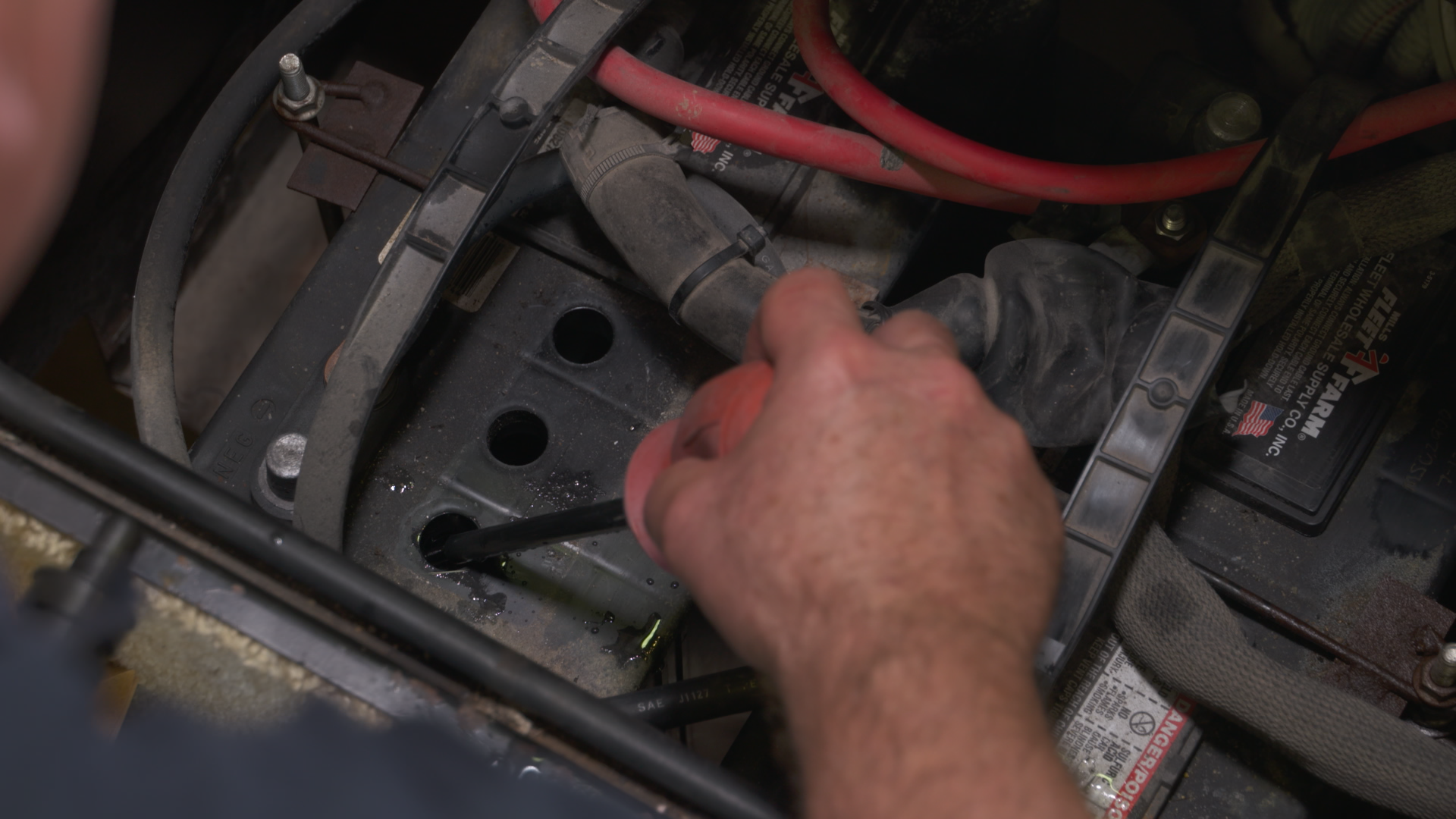
For the most part, the house batteries are one of the most neglected components in an RV. They are typically located in hard to reach compartments and “out of sight, out of mind”! During charging, electrolyte can gas and dissipate leaving the level below the plates and limiting the amount of energy that can be stored. Regular maintenance includes checking fluid levels, cleaning terminals, and proper charging.
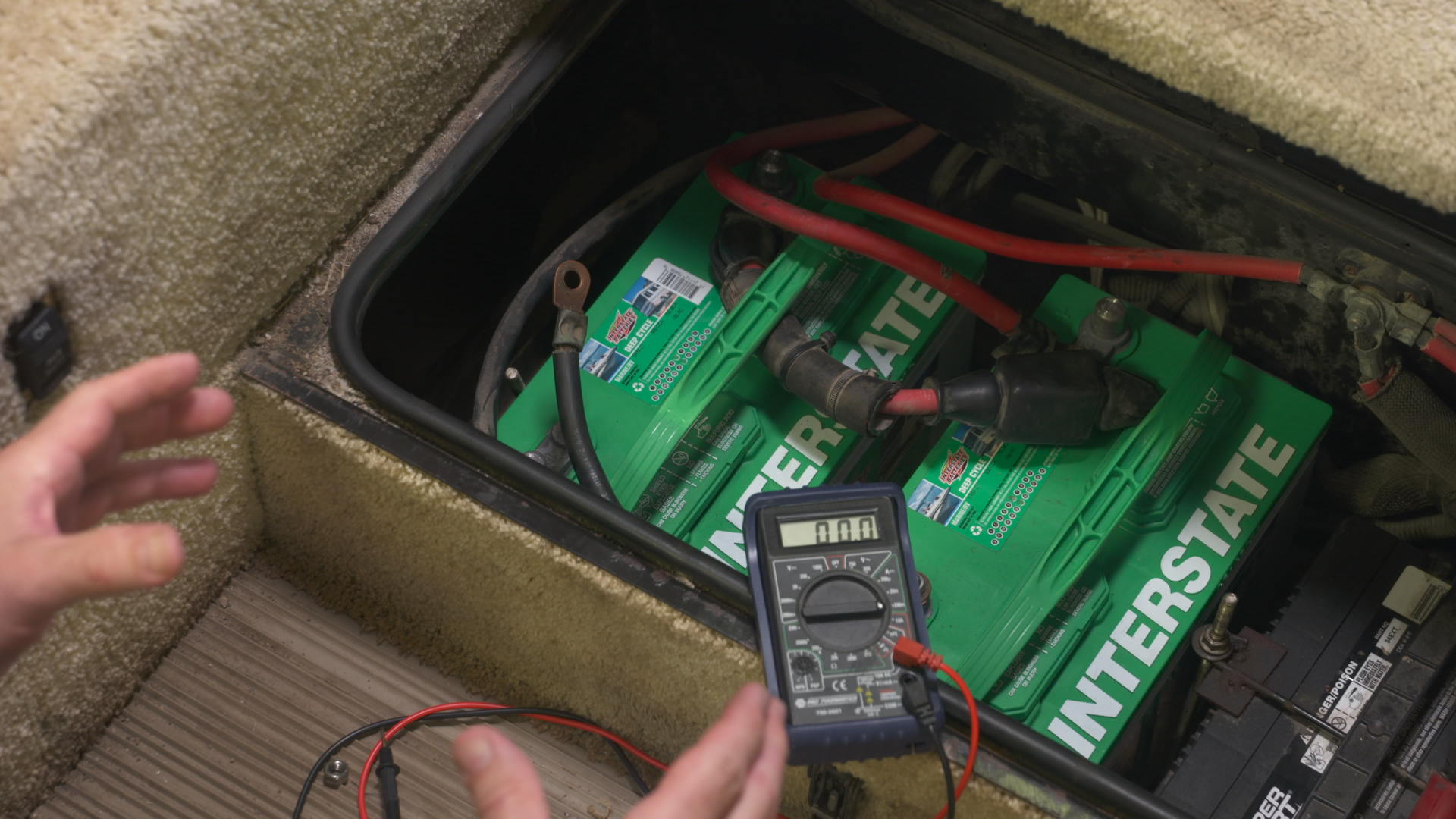
It’s important to understand what components are not only powered by the house batteries, but what components draw from them even if the unit is off. Most RVs today have a battery disconnect which should shut everything off, however some components such as the LP Leak Detector and CO Detector are often times connected directly to the battery and will drain the house batteries in a couple weeks.
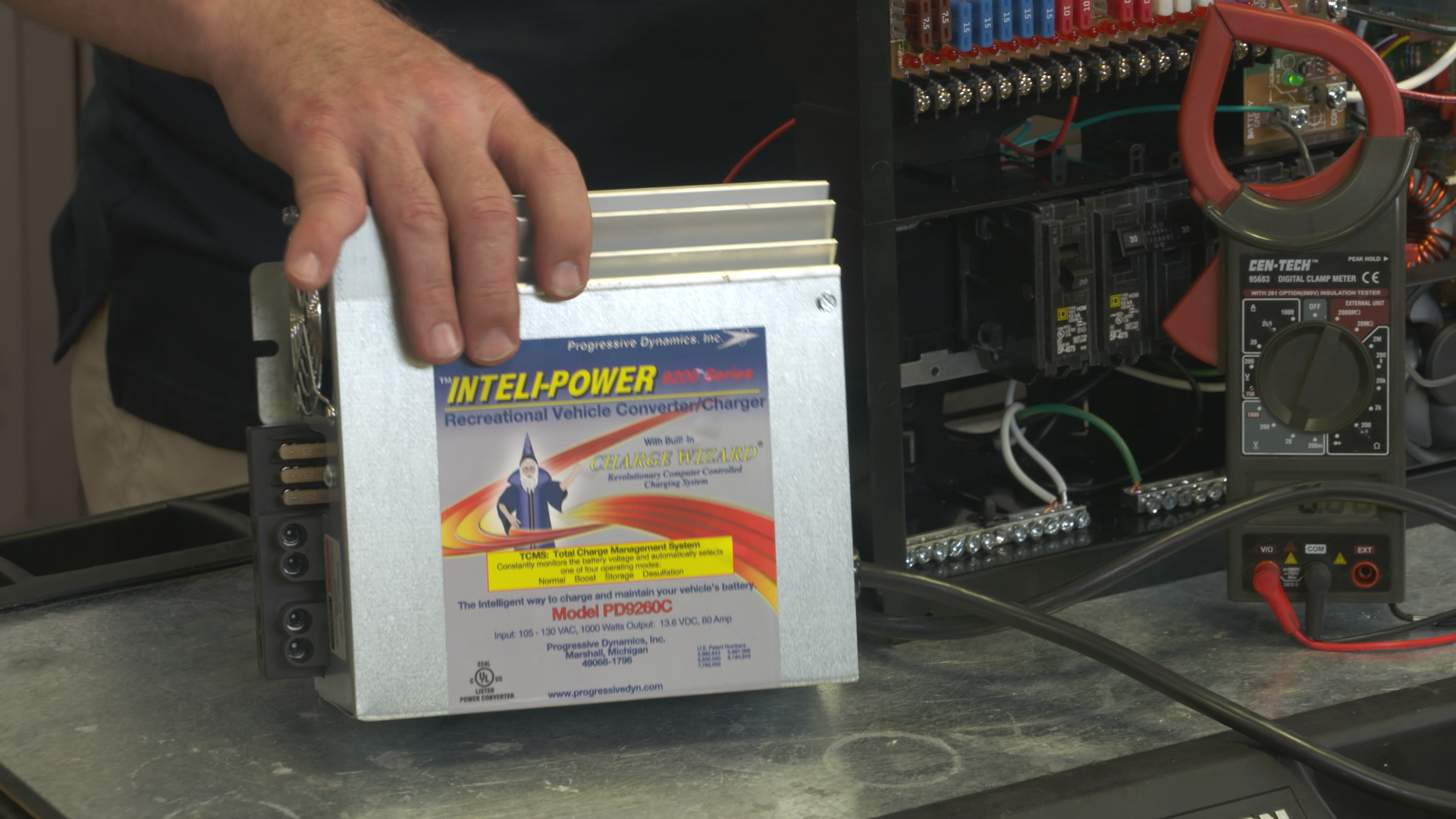
The converter, usually located in the distribution center provides a charge to the batteries when the unit is plugged into a 120-volt electrical source or the generator is turned on. Newer models have the converter located in an out of the way location which runs quieter and with less heat. Some models even feature the multi-stage charge for better battery conditioning.
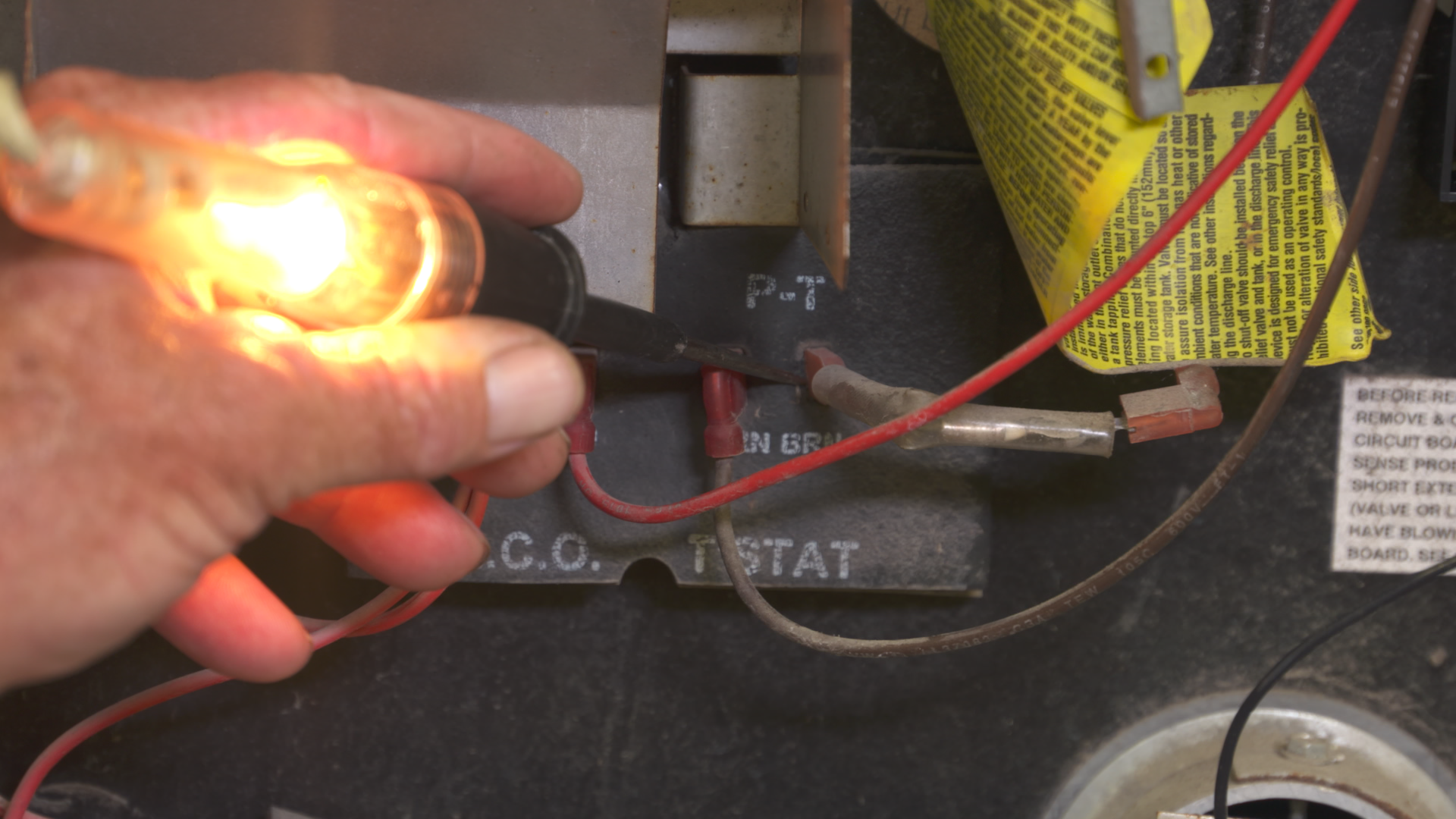
Diagnosing a 12-volt deep cycle component starts with an understanding of what appliances operate on 12-Volt vs. 120-volt, and how the system is wired. For years, the negative cable of the house battery was connected to the chassis or undercarriage foundation which was used as a ground source for appliances and components throughout the RV. A positive wire ran from the distribution center and the component was “grounded” to the nearest conductive metal such as the sidewall or roof frame. Loose connections, weak or broken welds, and road vibration created “gremlins” when troubleshooting. Learn a quick and easy way to bypass all these gremlins to verify proper grounding as well as other troubleshooting tips.
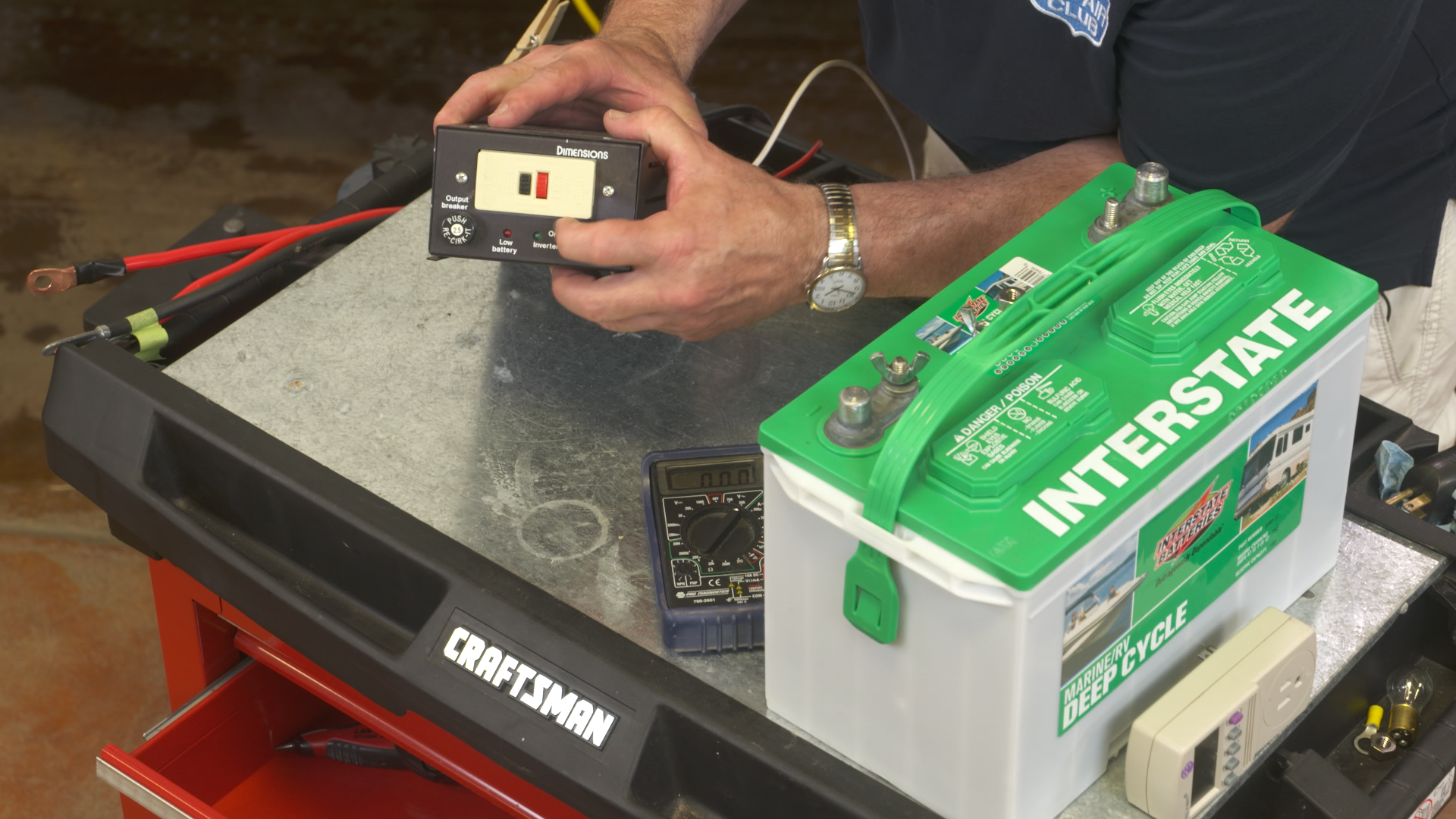
Dry camping or “boondocking” is camping in an area without an external electrical connection and water hookups. To operate appliances that only run on 120-volt power, an inverter will take 12-volt power/energy from the house batteries and provide 120-volt power to small items like the TV/DVD player. Larger inverters can power appliances like the refrigerator using a large bank of house batteries.
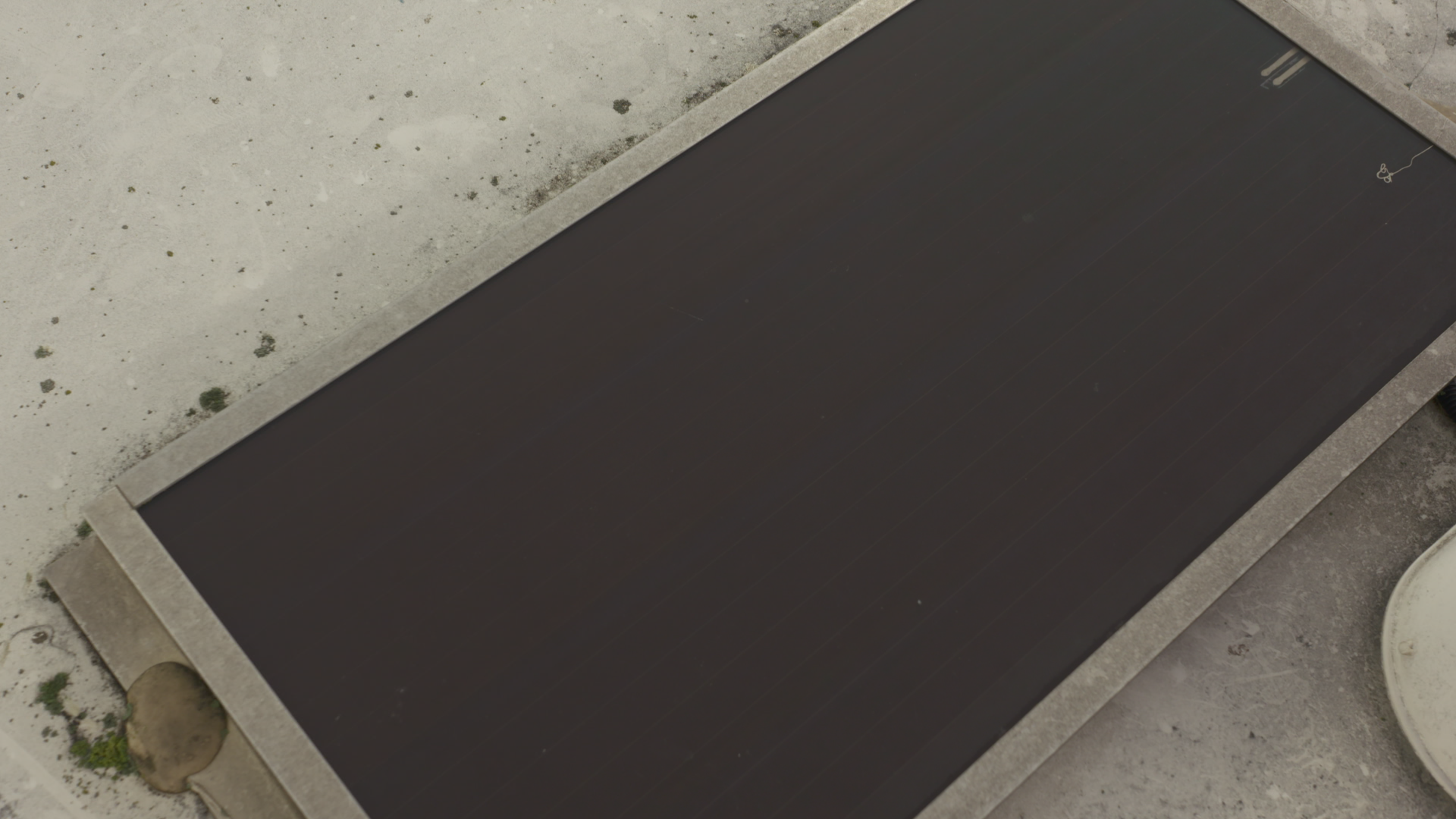
While dry camping, solar panels can be used to harness energy from the sun and charge the batteries without needed to connect to an electrical source or start the generator. New technology has provided larger capacity panels as well as thinner, flexible models that are lighter weight and can be mounted easily to the roof of an RV.
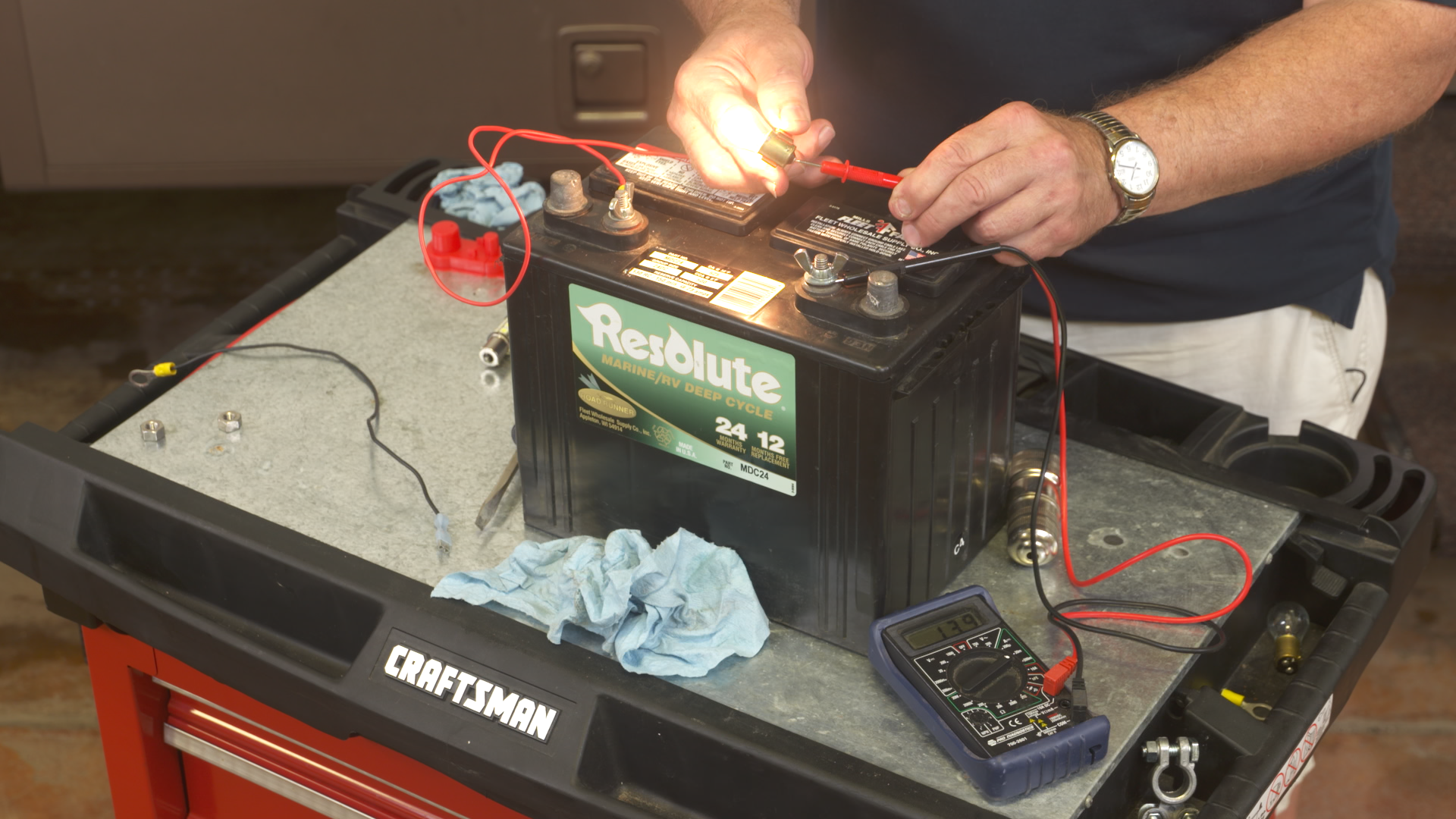
Learn the tips and tricks of seasoned RV veterans for “stretching” battery power by using LED lighting, portable and rechargeable lights, and creative ways of cooking using a French Press for coffee! Learning what are the largest energy draws and developing a better management of usage will extend even the most limited battery power.
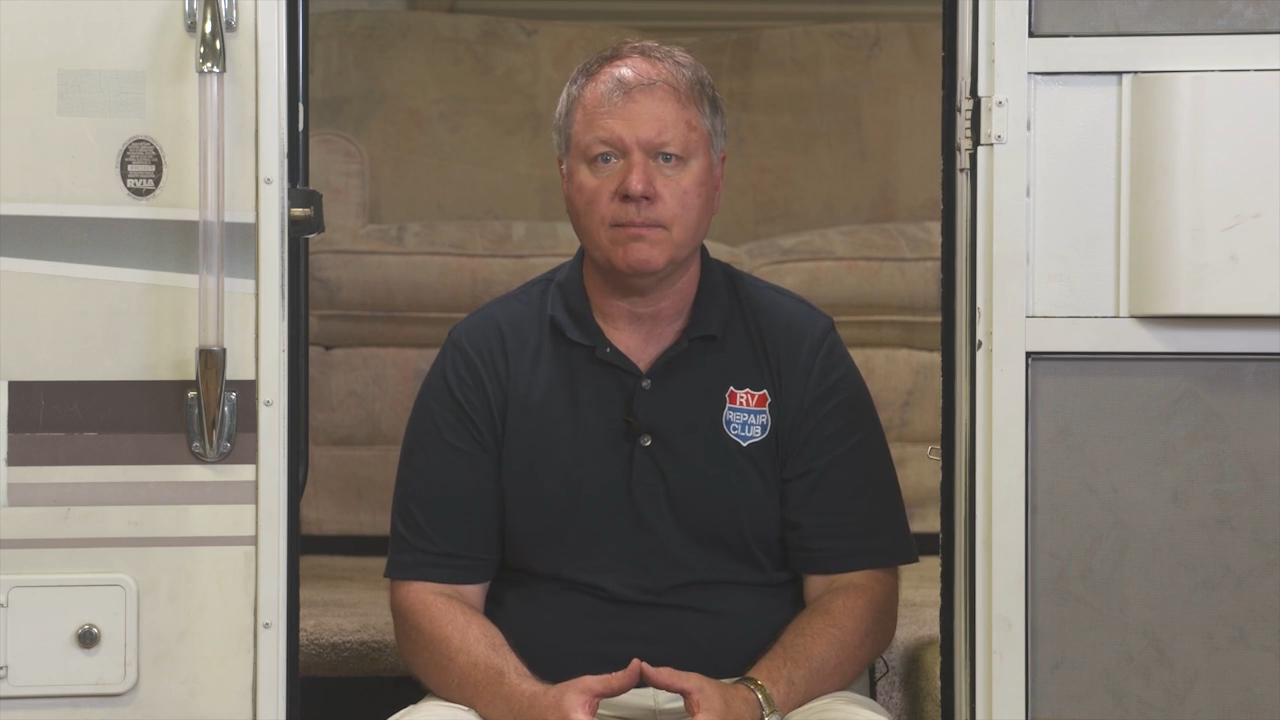
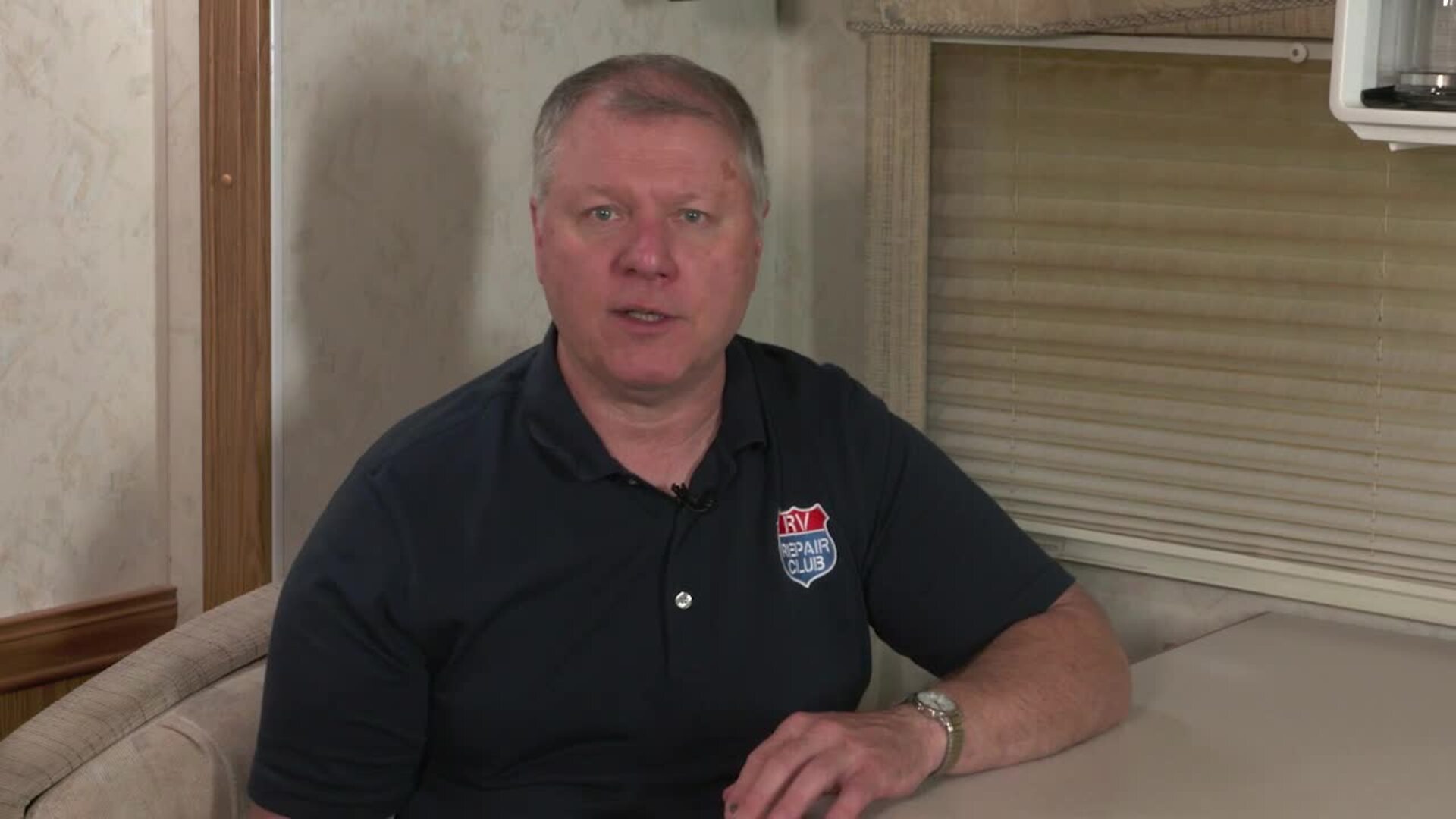
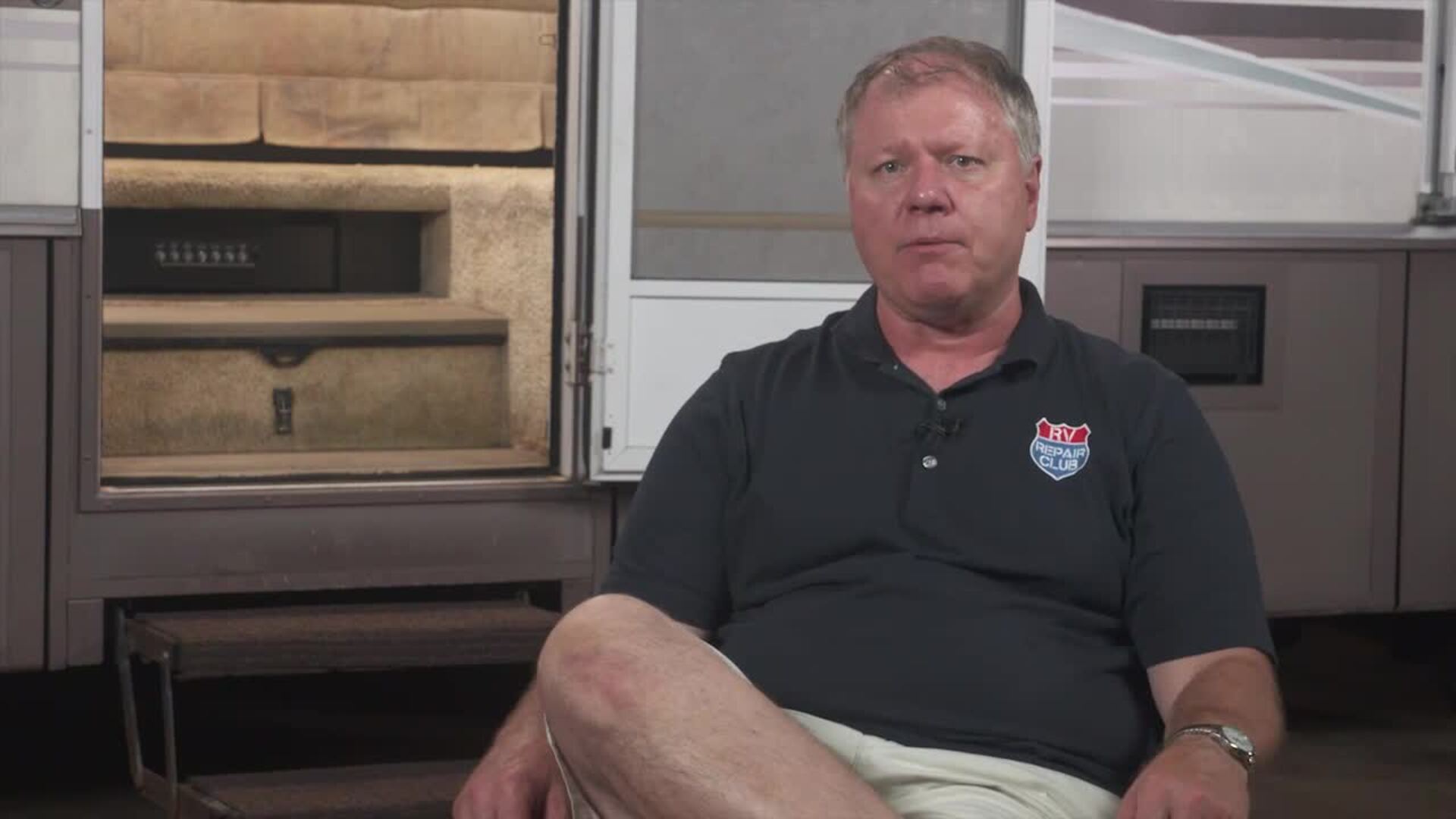
To get maximum enjoyment from your RV experience, keeping the “lights on” is a necessity. In this video class, you’ll learn must-have insights and tips regarding the operation and maintenance of a 12-Volt Deep Cycle battery system.
Your class will start with a walk-through of what components operate on the 12-volt system, such as interior lights, ceiling vents, water pump and several appliances that run on LP.
Your instructor, Dave Solberg, shows the difference between typical 12-volt deep cycle batteries and 6-volt deep cycle batteries that are connected in series to create a 12-volt system, as well as the difference between them and typical automotive batteries.
You’ll get an in-depth look at the distribution center to show how your battery or batteries provide power to components and how they’re protected. We’ll cover lead acid batteries that have been the main source of power in RVs for years, but also the main source of frustration.
You’ll learn about parasitic drain and, after watching this class, you’ll be able to determine if you have a parasitic drain on the house batteries and help identify what is causing it.
When it comes to taking care of your batteries, this class will provide the proper steps for maintenance, charging, and storage to extend their life.
Troubleshooting your 12-volt system is another important area we’ll cover, and it can be a daunting task as negative ground issues can become “gremlins” in a chassis foundation. In the class, you’ll see how bypassing the original ground with a test wire can save you hours of frustration and fix an issue quickly.
And you’ll learn how using a simple multimeter can make troubleshooting a breeze. Our RVIA Certified Master Technician shows you the basics of using a multimeter, the proper settings, and what to look for in troubleshooting the various 12-Volt components.
In addition to the detailed video instruction you’ll receive, this online class provides you with some downloadable resources and helpful information to print and keep, including: A detailed Class Guide you can follow and use as a reminder for the key points of the class instruction; and a few resource documents that will help you get the most out of your 12-Volt battery operation.
NOTE: This Class video instruction is also available for purchase in DVD form. If you prefer to own a physical copy, you can purchase the Class DVD here.
Dave Solberg
Dave Solberg is the Managing Editor of the RV Repair Club. For over 25 years, Dave has conducted a wide range of RV maintenance and safety seminars, developed dealer and owner training programs, written RV safety and handyman articles, authored an RV handbook reference guide and logged over 100,000 miles on the road in an RV.

Bonus materials available after purchase
How do I know what the Class covers?
Do I have to be a Member of RV Lifestyle & Repair to purchase a Class?
How do I purchase a Class?
How do I access/view my Class?
Do I have to take the Class right away?
Is there a limit on the times I can view my Class?
Can I view a Class on my tablet device or mobile phone?
How do I get access to the Bonus Materials for the Class?
How does the Class Q&A Resource benefit work?
Can I print out Class details?
What are PDF downloads?
Are there any system requirements to view the Class video content?
Why do you need my email?
Can I get a refund if I don’t like the Class?
How do I contact RV Lifestyle & Repair Academy?
Purchase Class
Purchase class and add to your personal library with on-demand video access.
- Enjoy on-demand video access to this content anytime, anywhere for the one-time cost below.
- You won’t lose access, with or without an active current Membership

12-Volt Deep Cycle Battery Essentials
with Dave Solberg